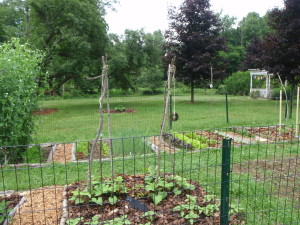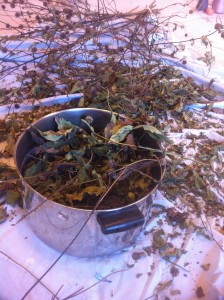buzz
Our two new bee nucs arrived this week. A nuc (short for nucleus) contains one queen, 5,000-10,000 bees and the foundation and brood that the bees have begun working on.
On the colonial farm, honey served multiple functions—as a sweetener; a preservative; and for beverages, usually in the form of a home-made meade. The wax was used to make candles, for waterproofing leather and coat thread, and as a chewing gum.
Our bees are apparently liking their new homes, and are quite busy today in their quest for water (for cooling) and pollen (for food production = honey). Our garden and more and more of our surrounding fields are now stocked with bee-loving plants—bee balm, thyme, lavender, borage, and roses, and my husband takes particular care to avoid mowing the clover sprouting up throughout the lawn and fields. Later in the season, the bees will enjoy sunflowers and golden rod.
Bees are threatened in our modern world and countless thousands of hives have been lost due to a combination of habitat loss, pesticides (including neonicotinoids, which our government refuses to ban) and parasites. Markus Imhoof’s stunningly shot documentary film, “More than Honey” examines the relationship between agriculture, man and bees, and will be on view at NYC’s Film Forum starting June 12th until June 25th. I plan to go to see this important film.
[http://www.colonialsense.com/How-To_Guides/Outdoors/Bee_Skep.php]




